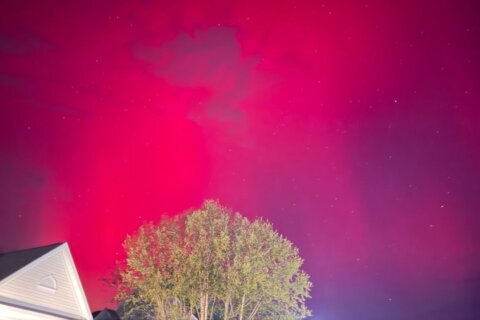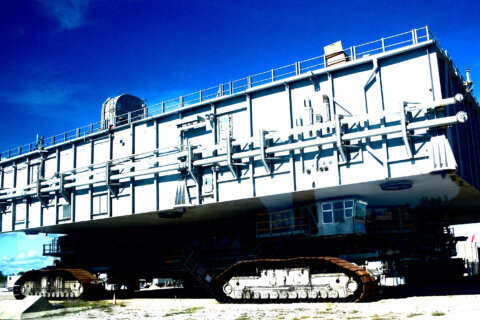June 30, 2015, was the first “Asteroid Day” — a “global awareness movement where people from around the world come together to learn about asteroids and what we can do to protect our planet” from asteroid and comet impacts.
This year’s Asteroid Day has planned events held worldwide and online, including mine: “The Sky IS Falling: Space Rocks and You,” at the Skyland Lodge Conference Center in Virginia’s Shenandoah National Park on Sunday, June 30 at 9 p.m. Eastern.
An excellent Asteroid Day resource webpage has been created by NASA’s Jet Propulsion Laboratory, replete with “teachable moments, student activities and educator guides all about asteroids and comets.”
A significant date in Earth’s history
On this date in 1908, a “stony (not icy) body, between 164 and 262 feet in diameter, entering the atmosphere at around 34,000 miles per hour, depositing the 10 to 30 megaton explosion, equivalent to the blast energy of the 1980 Mount St. Helens eruption, at 6 to 9 miles altitude” occurred over Tunguska, Russia, according to a 2019 NASA update on the “Tunguska Event.”
The Tunguska Event devastated 830 square miles and flattened 80 million trees in the largest such event to occur in modern times. This is why Asteroid Day is held every year on June 30, as a reminder to the world that planetary defense against asteroids and comets matters.
We had the Chelyabinsk impact event in 2013, which was historic due to the number of injuries and damage to buildings it caused — the most ever recorded due to an asteroid/meteorite event.
The Chelyabinsk Event was the most documented asteroid explosion and meteorite fall ever, due to the number of videos, sound recordings, photographs, witness interviews and the precise recovery process of associated meteorites.
Chelyabinsk also improved our knowledge regarding the threat posed by asteroids that are smaller than a kilometer. The smaller asteroids like Chelyabinsk pose a greater hazard for damage than previously thought.
In December 2018, an event with 40% of the energy release of Chelyabinsk took place over the Bering Sea, reaffirming that such events happen more often than we would like.
Efforts by the United Nations, NASA, ESA and the B612 Foundation are working to develop a defensive capability as well as improved detection of the millions of asteroids.
D.C. area’s direct connection to Asteroid Day
The B612 Foundation announced Friday that a local researcher won the very first Planetary Defense Award, called the Schweickart Prize, launched in 2023 in honor of Apollo 9 Astronaut Rusty Schweickart.
The prize was awarded to Joe DeMartini, an astronomy Ph.D. student at the University of Maryland, for his outstanding twilight-observing campaign proposal on Saturday. Apollo 9 astronaut Rusty Schweickart presented the prestigious prize at a special ceremony featuring NASA astronauts Steve Smith and Nicole Stott, as well as YouTuber Scott Manley.
The following are important highlights in planetary defense that have, or will, significantly improve our protection from an incoming asteroid through detection and deflection:
- NASA has established a Planetary Defense Coordination Office.
- Interagency exercises such as the “fifth biennial Planetary Defense Interagency Tabletop Exercise” held in Maryland are regularly conducted to test real-world scenarios and responses.
- In 2021, we finally got a space-based telescope mission approved, NEO Surveyor, that is designed specifically for finding space rocks large and small — like Chelyabinsk. This mission will greatly improve our ability to detect space rocks, especially those that lurk near the Sun (like Chelyabinsk) and as a result cannot be readily seen by Earth-based telescopes. In an email, NEO Surveyor principal investigator Dr. Amy Mainzer said: “We’re excited to ramp up work on the spacecraft bus starting this fall in preparation for launch in September 2028.”
- NASA’s Double Asteroid Redirection Test (DART) mission impacted and changed the orbit of an asteroid in September 2022.
- A worldwide community of citizen astronomers in conjunction with the SETI Institute are actively participating in planetary defense by making real-time observations using telescopes made by Unistellar. I bought one of their telescopes in order to participate in their citizen science projects.
A last point for you to consider: “The dinosaurs are dead because they didn’t have telescopes or a space program.” I use this phrase of mine to highlight for my audiences what we need to do to avoid going the way of the dinosaurs who were killed off by an impact in the Yucatán Peninsula 66 million years ago.
The cosmic clock is ticking. Asteroid Day became part of the movement.
Follow Greg Redfern on Facebook, X and his daily blog to keep up with the latest news in astronomy and space exploration.
Get breaking news and daily headlines delivered to your email inbox by signing up here.
© 2024 WTOP. All Rights Reserved. This website is not intended for users located within the European Economic Area.







